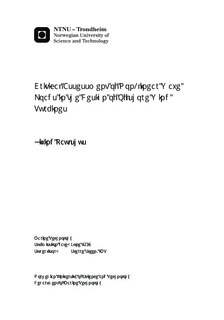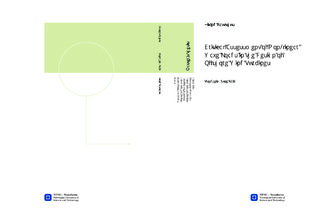| dc.description.abstract | Good wind conditions make Dogger Bank a well suited site for offshore wind industry. The harsh environment combined with shallow water, create significant non-linear wave loads which must be accounted for in the ultimate limit state design calculations (ULS). The application of different non-linear wave models have been given a wide critical assessment throughout the thesis. A monopile substructure is considered at depths of 25 and 45 meter.
The DNV standard OS-J101 give the industrial practice for design of offshore wind turbines, and is followed by large contractors in the industry. The standard defines load cases involving the 50 year sea state parameters and the 50 year wave height.
The irregular 2nd order wave model is presented, including stretching and extrapolation which are methods to account for the surface elevation. Linear and 2nd order kinematics, stretching of linear kinematics to the 1st and 2nd order surface, and 1st and 2nd order extrapolation models, have all been assessed, using the 50 year sea state values.
A cut-off value has been needed to truncate the wave spectrum, to avoid unphysical high frequencies in the inertia load. The proposed cut off to the 2nd order theory has been applied to all models to make a comparison more meaningful. The 2nd order theory is not valid at 25m due to an unphysical enlargement of low frequency components. The problem has been avoided by adjusting the depth parameter. The method has been applied carefully, and the implications have been discussed.
The kinematic models are all applied to the structure with Morison equation, which is a load model consistent to the 1st order. This is the load model according to the standard, but FNV, a load model consistent to 3rd order has been included for comparison. The methods are studied in both static and dynamic load calculation. The conservatism between models have been addressed. The influence of non-linearity at 25m contra 45m is studied by spectral and extreme value analysis.
The structural model in Fedem showed unexpected high excitation at the natural frequency. This required a parameter modification to make the comparison of load models meaningful. The load models have all been compared in the view of dynamic excitation.
The standard requirements for the Wind Industry define 50 year sea state parameters inconsistent with the rules well known to oil and gas installations. The conservatism between the methods have been assessed by performing an extreme value analysis in the time domain using Fedem.
Wave models to apply the 50 year wave height have also been addressed. The design wave will be highly depth limited at 25m and stream function wave theory is required to give a realistic representation of the vertical asymmetric wave profile. The wave can be applied as regular but a wave train of design waves are not realistic to occur.
Embedding is a much used method in the verification process. A stream function wave is embed into a stochastic realization to make the loads and dynamics more realistic. The method is widely applied, but to structures that are dominated by drag loads. At Dogger Bank, the dimensions are larger, and inertia loads are found to dominate completely. How this affects the method will be discussed.
Statistic consequences when violating the stochastic nature of the time series have been analyzed. The effect to the dynamic response of the structure is also studied. The use of stream function waves and embedding is compared to linear regular waves in the view of conservatism. The implications when describing a wave close to breaking by the use of stream function, will also be addressed.
Improvements to the embedding method is created and compared to the method applied in the industry. | |

